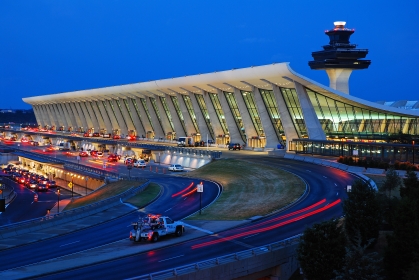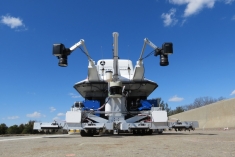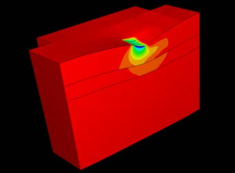Infrastructure Engineering

Our infrastructure engineering research aims to develop solutions for sustainable and resilient infrastructure, such as highways, airports, railroads, ports, and pipeline systems, that will have major impacts on the nation’s economy, security, and employment. Advanced nondestructive evaluation, structural health monitoring, and remote sensing, combined with numerical simulations and performance and physical modeling are used to develop a deep understanding of factors influencing the infrastructure performance and ways for their effective and economic management.
Associated Faculty: John Braley, Jie Gong, Nenad Gucunski, Ali Maher, Hao Wang
Research Clusters
Infrastructure Performance Assessment and Monitoring
Faculty: Braley, Jie Gong, Gucunski, Maher, Wang

Building on a strong foundation of research and practical experience in the condition assessment and monitoring of transportation infrastructure, primarily bridges, pavements, and runways, using nondestructive evaluation (NDE), structural health monitoring (SHM), accelerated structural testing, remote sensing, and numerical simulations and modeling, CEE faculty are developing effective approaches in monitoring and prediction of future performance of infrastructure assets.
Research and education activities concentrate on the development and application of the latest technologies for NDE and SHM for condition assessment of bridges in the field and accelerated structural testing facility that will lead to the development of more accurate deterioration and predictive models. Ultrasonic, seismic (surface wave), electromagnetic, electrical, and other NDE techniques are used to inspect materials and components. Similarly, various types of sensors are deployed to provide continuous monitoring of changes in material properties, environmental conditions, structural response, and others. Using these techniques enables the detection of problems at their early stages leading to better planning in the application of maintenance and rehabilitation measures and, thus, a more economical infrastructure management.
Infrastructure Modeling and Life-Cycle Management
Faculty: Braley, Gucunski, Wang

Civil infrastructures are subject to complex service conditions (mechanical, thermal, hydraulic, and chemical) in their service life. It is critical to have a deep understanding of the material–structure–performance relationship and preserve a good infrastructure condition with an optimized maintenance and repair strategy. CEE faculty are developing physics-guided computational models combined with data analytics for decision-making of life-cycle infrastructure management in roadway, bridge, airfield, rail, and pipeline.
Critical Infrastructure Protection
Faculty: Jie Gong

Many crowded places and soft targets in the United States have been grappling with unprecedented security challenges, requiring scalable and effective solutions to identify and mitigate these vulnerabilities. Surface transportation facilities, sports stadiums, malls, and schools are examples of crowded places facing these growing security challenges. CEE faculty and students are conducting research to quantify, monitor, and model these built environments to support what-if questions and identify small changes in the built environment that can significantly improve the security of these crowded places.